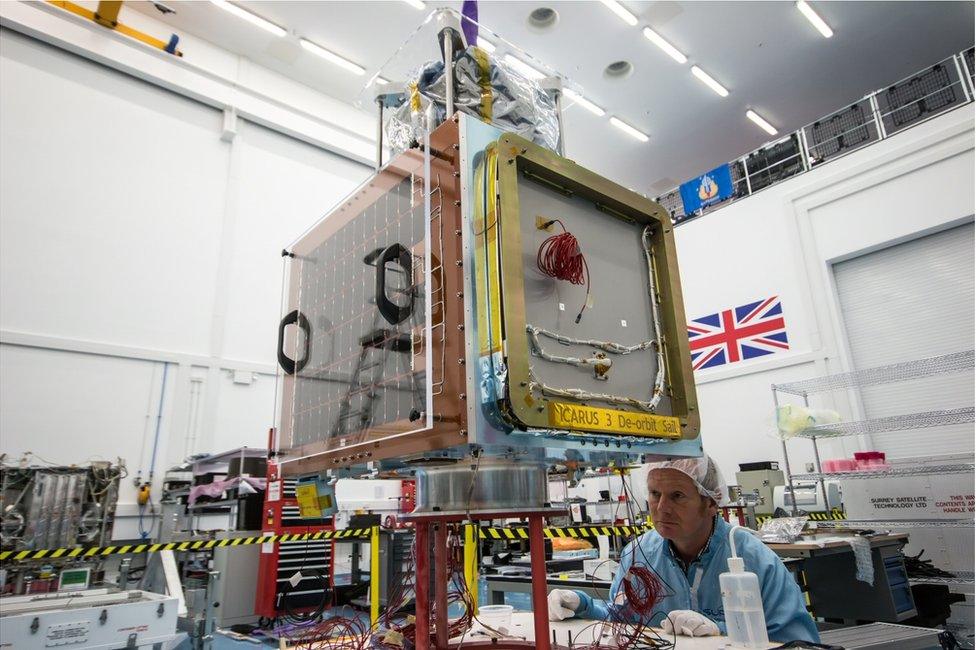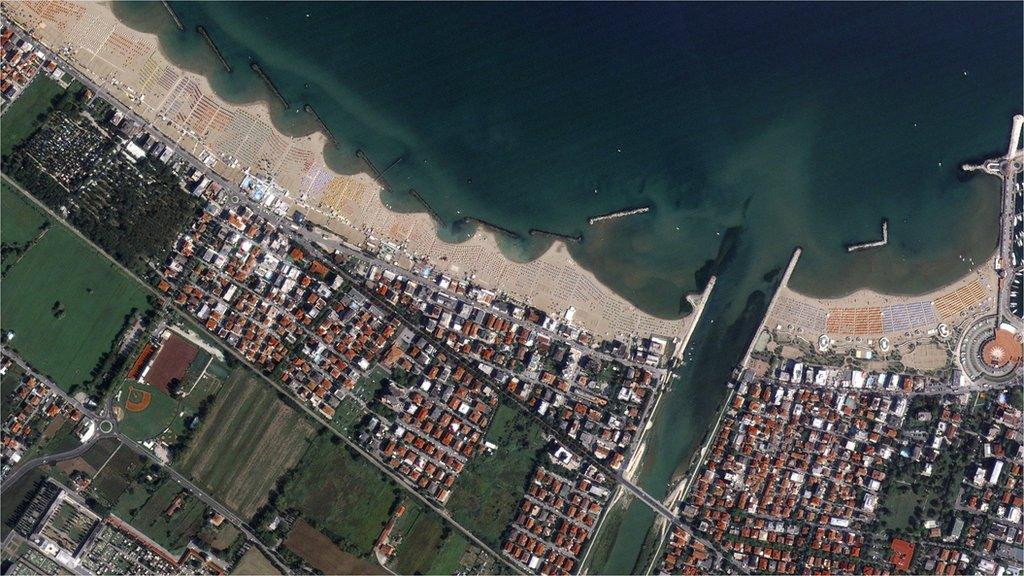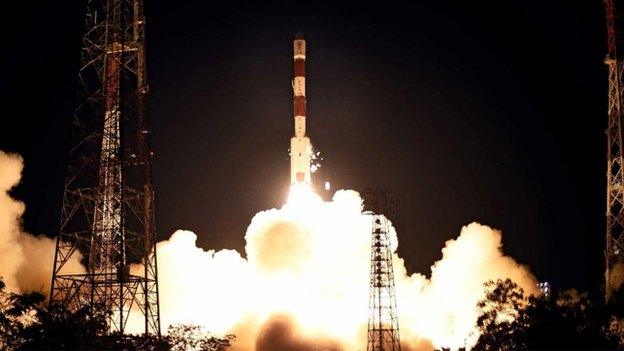'Carbonite' space imager revealed
- Published

Carbonite is a model for a quick-build, ultra-low-cost satellite
UK small satellite manufacturer SSTL has released details of the spacecraft it launched in July, but about which it gave few details at the time.
Codenamed Carbonite, the 80kg platform filled some unused mass on the rocket that put up the company's new high-resolution imaging constellation.
It turns out the additional passenger was a demonstrator for a new type of quick-build, ultra-low-cost satellite.
Carbonite uses an off-the-shelf camera and telescope to take videos of Earth.
It acquires still pictures as well. Both modes show features on the ground down to a size of 1.5m.
However, if flown in a 500km-high orbit, this would be a 1m ground-resolution.
Carbonite's mission was revealed at last week's World Satellite Business Week, external conference in Paris, organised by Euroconsult.
The intention is to compete the platform in the emerging Earth-observation market for daily, fast-turn-around imagery.
This is a market being targeted currently by a number of Silicon Valley operations, including Skybox-Google and Planet Labs, and requires the use of multiple satellites in orbit.
Carbonite-1 was built and tested in six months.
Its camera and telescope, which has a 25cm mirror, were both bought online and then adapted so they would cope with the harsh environment of space.
It also incorporates a drag sail, which will be deployed at the end of its mission to pull it out of orbit.
Fill-in role
SSTL says more Carbonite missions are already in development.
The goal is to reduce the mass to 50kg, and to get the build time down to under three months.
The cost will have to be lowered, too. The aim there is to turn Carbonites out for well less than a million pounds.
"That will depend on what level of sophistication the customer wants," said Luis Gomes, the head of Earth observation at SSTL.
"What Carbonite is about is filling in the blanks, and doing it in a timely way," he told BBC News. (If there is cloud in the way, the ground cannot be seen by an optical satellite).
"There is a lot of hype out there about some of these new systems - that they can do everything.
"No, they can't, but for certain applications, they will nevertheless perform a role in supporting more capable constellations."
SSTL has not released publicly the imagery acquired by the demonstrator in the last few weeks.
The Guildford company says it has been busy getting its own new DMC3 imaging constellation ready for operation and wants more time to work with the Carbonite product before showing it off more widely.
For those wondering where they may have heard the word "carbonite" before - one use was for a fictional substance in the Star Wars film The Empire Strikes Back.
The material was used by the Empire to freeze the body of smuggler and rebel leader Han Solo.
Jonathan.Amos-INTERNET@bbc.co.uk, external and follow me on Twitter: @BBCAmos, external
- Published16 September 2015

- Published11 September 2015

- Published10 July 2015
